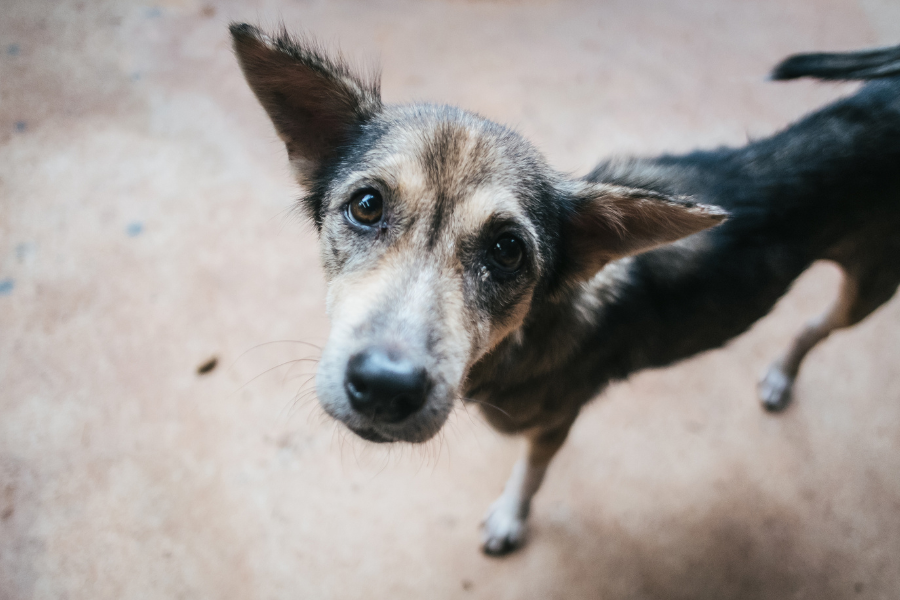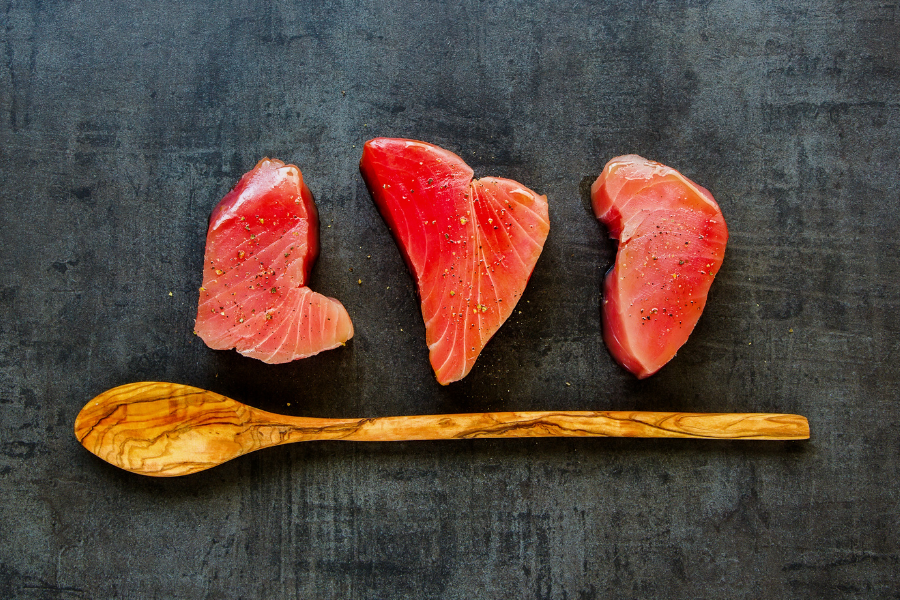Hey there, doggie devotees! If you're reading this, you're probably scratching your head, wondering why your four-legged friend isn't becoming the chubby furball you expect. Some pups seem to bulk up just by sniffing the delightful aroma of dinner cooking, while others stay trim no matter how much they munch and crunch on their kibble. If your canine pal is in the latter group, don't stress—we're on a mission to help you unravel the mystery.
The Skinny on Dog Weight
Now, let's chow down on the possible reasons behind your pooch's weight situation, and why it could be a big deal. A healthy weight is typically indicative of a healthy dog, and crucial to keep your pup's tail wagging. Weighing too little is either preceded by health problems, or can lead to health problems (or both), like a weaker immune system, low energy levels, and more serious conditions. Plus, no one wants their pup labeled "slender Suzie" (unless, of course, your dog's name is Suzie).
Before we dive in, it is important to note that some dog breeds are just naturally slim and sleek. Breeds like Whippets and Italian Greyhounds are genetically built to be on the leaner side, flaunting their slender physiques like runway models! It's just part of their, so if you have a skinny dog breed, there is typically no need to stress about their dainty frames.
Why Your Pooch Isn't Packin' On Pounds
1. Poor Diet or Low-Quality Food
Starting at square one, your pup’s diet might be the sneaky villain here. Dogs, much like us two-legged folks, need a mixed bag of nutrients to keep that scale number steady. If your pup's chow is missing out on key goodies (like sufficient amounts of protein, carbs, or fats), or if they're just not chowing down enough, that could be the sneaky villain. Take a gander at that dog food bag. If it looks more like a science project than a dinner menu, it might be time to swing for something more natural and loaded with the good stuff.
2. Picky Eating Habits
Got a pup that's snubbing their snout at their kibble? Some pups are just fusspots at the dinner bowl. Try jazzing up their kibble with a dollop of wet food, a splash of broth, or even some dog-safe human tasties to make their mealtime more enticing. But be careful not to overdo the spoiling though (we have made this mistake before!) - you don't want to wind up with a four-legged foodie who only goes for gourmet grub.
3. Health Issues
If your pooch eats a ton but still looks like a twig, there might be some underlying health issues to blame. Conditions like parasites, diabetes, thyroid issues, or a gastrointestinal imbalance could be keeping those pounds at bay. So what should your first Sherlock Holmes move? We recommend zipping over to the vet to rule out or uncover any of these potential health issues!
4. High Energy Levels
Let's face it, some dogs are born to run and are just natural thrill-seekers! Breeds like Greyhounds or Border Collies are like the Energizer bunny, they just keep going and going! If your fur friend is a constant zoomer, they might need some extra grub to fuel their rocket of energy!
5. Stress or Anxiety
Just like us, our dogg-o buddies can have rough days too. Stress, anxiety, new fur siblings, or even missing you can make their tummy go topsy-turvy, which could lead to weight loss. While dogs can't really do any mindfulness practice like we might recommend for human stress, a soothing environment, lots of body rubs, and regular play dates can help your pup shake off this stress.
6. Age-Related Changes
Just like fine wine, our dogs get better with age, but boy, do their metabolisms do a number on them! Pups and young dogs are like calorie-burning machines, while our senior fur friends may see weight changes due to loss of muscle mass or metabolic shifts. So, remember to adjust your fur kiddo's meals as per their age to make sure they're getting all the good stuff they need!
Steps to Help Your Dog Gain Weight
Right, so your little furball isn't putting on the pounds like they should. No worries! Let's whip up a masterplan to chunk up your cuddly canine.
Step 1: Take a Trip to the Vet
First things first. Pay a visit to the doc – and by doc, I mean vet. A good old health inspection will help rule out any sneaky health issues or give you a diagnosis that'll guide the journey to a healthy weight.
Step 2: Food Check!
It's time to upgrade your dog's dining experience with high-grade chow that provides all the nutrition your buddy needs. Scout for foods with real meat leading the ingredient list and sidestep those loaded with random fillers or artificial junk. And hey, maybe throw in a spoonful of peanut butter (xylitol-free please) to their meal for that extra calorie kick.
Step 3: Regular Nom-Noms and Yummy Bits
Make sure you're dishing out regular meals and throwing in a few snacks round the clock. Just remember, don't go overboard with the treats – they're like the cherry on top, not the whole sundae itself.
Step 4: Make Mealtimes a Fun-fest
Jazz up your dog's meal times with wet food, chicken broth, or just some plain cooked chicken in their chow. It's a delicious flavor bomb that'll have even the fussiest pooch drooling for more.
Step 5: Fun and Games for Gains
Yes, you read that right! Regular exercise may seem like it's for weight loss, but it also revs up your pup's appetite and can build muscle. So, it's time to play fetch! Just remember, don't let them turn into a marathon runner; we're aiming for balance here!
Step 6: Celebrate Every Pound
Each week, check how much your dog weighs. Are your efforts making your doggo rounder? If not, or if you're worried, have your vet on speed dial and ask for more tips.
Conclusion
Just remember each dog is an individual, and what floats one dog's boat might sink another's. The secret is patience, baby! Keeping an eye on your pooch's chow-down habits, exercise routine, and general health, you'll be on the fast track to achieving that perfect healthy weight for them.
Come be part of our uber-cool doggy society! We swap tips, share doggy tales, and lend each other a paw. Subscribe to our newsletter for the latest and greatest in the doggy world. Your fur baby's next epic journey is just around the corner, and we're here cheering you on!
FAQ
Is my dog too skinny if I can feel her spine?
Feeling your dog's spine is not always a cause for alarm, but it's something you want to keep an eye on, paw-sitively! Every doggo has a different body type, and some breeds are naturally leaner. But if your furry friend's spine is super prominent with little fat covering, it might be time to check in with your vet. They can help determine if your pup is rocking the right weight or if there's some underlying issue.
How can I fatten up my skinny dog?
As we have covered in this blog, if you're looking to help your skinny dog put on some weight, try adding a little more healthy fats to their diet, like cooked chicken or some fish oil. High-calorie food and dividing their meals into smaller, frequent feedings throughout the day can also help! A don't forget possibly the easiest way - to sneak in some tasty treats to their diet. However, before making any changes, it's a great idea to chat with your vet to make sure there isn't an underlying health issue causing their skinniness.
References
1) Urgel MFM, Ybañez RHD, Ybañez AP, Delan ES. General knowledge and practice of household dog owners regarding gastrointestinal parasites in Cebu, Philippines. Vet World. 2023;16(7):1438-1443. doi: 10.14202/vetworld.2023.1438-1443. Epub 2023 Jul 9. PMID: 37621539; PMCID: PMC10446725.
2) Bezzola P. Thyroid carcinoma and hyperthyroidism in a dog. Can Vet J. 2002 Feb;43(2):125-6. PMID: 11842596; PMCID: PMC339177.



